
GET TO KNOW MORE ABOUT ONE OF AFRICA'S MOST ELUSIVE CREATURES


The pangolin is a fascinating creature. Also known as the scaly anteater, these mammals are covered from head to toe in scales made of keratin, which is the same substance found in our nails and hair.
Tragically, pangolins are the most trafficked mammals in the world – poached from their habitats in Africa and Asia, their body parts sold in countries like China and Vietnam as a delicacy or used for their claimed ‘mythical healing properties’.
However, there are organisations out there doing their best to protect pangolins, such as the African Pangolin Working Group, a non-profit organisation committed to the conservation and preservation of Africa’s four species and the habitat they occupy.
Join us as we look at fascinating facts about these incredible but threatened species.
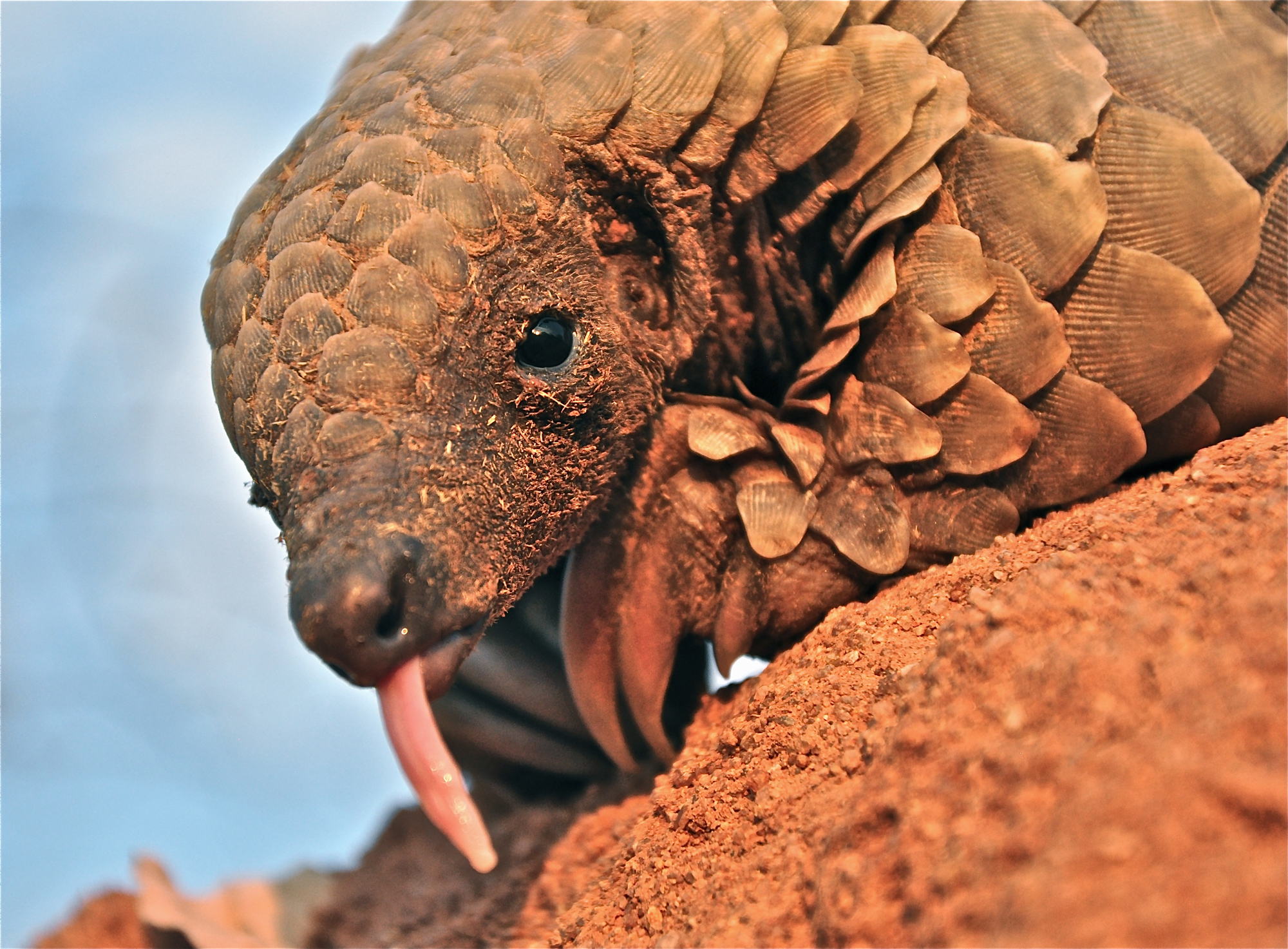
1. The word ‘pangolin’ comes from the Malay word ‘penggulung’, which means ‘roller’. This refers to the defensive stance – rolling into a ball – that pangolins assume when startled or when protecting themselves against potential predators. Another term used for pangolins is ‘scaly anteater’ – this name comes from the fact that their diet is exclusively ants (and termites).
2. Pangolins typically give birth to only one baby per pregnancy after a gestation period of 69-150 days (species dependant). The babies are born with soft scales, which soon harden. The young are usually weaned at around three months of age, though at about one-month-old, they will start to eat ants and termites. In the meantime, they cling to their mother’s back while she forages.
3. They are not related to anteaters, sloths or armadillos. In fact, they are more closely related to carnivores.
4. Pangolins are the only mammal with scales, which make up about 20% of their body weight.
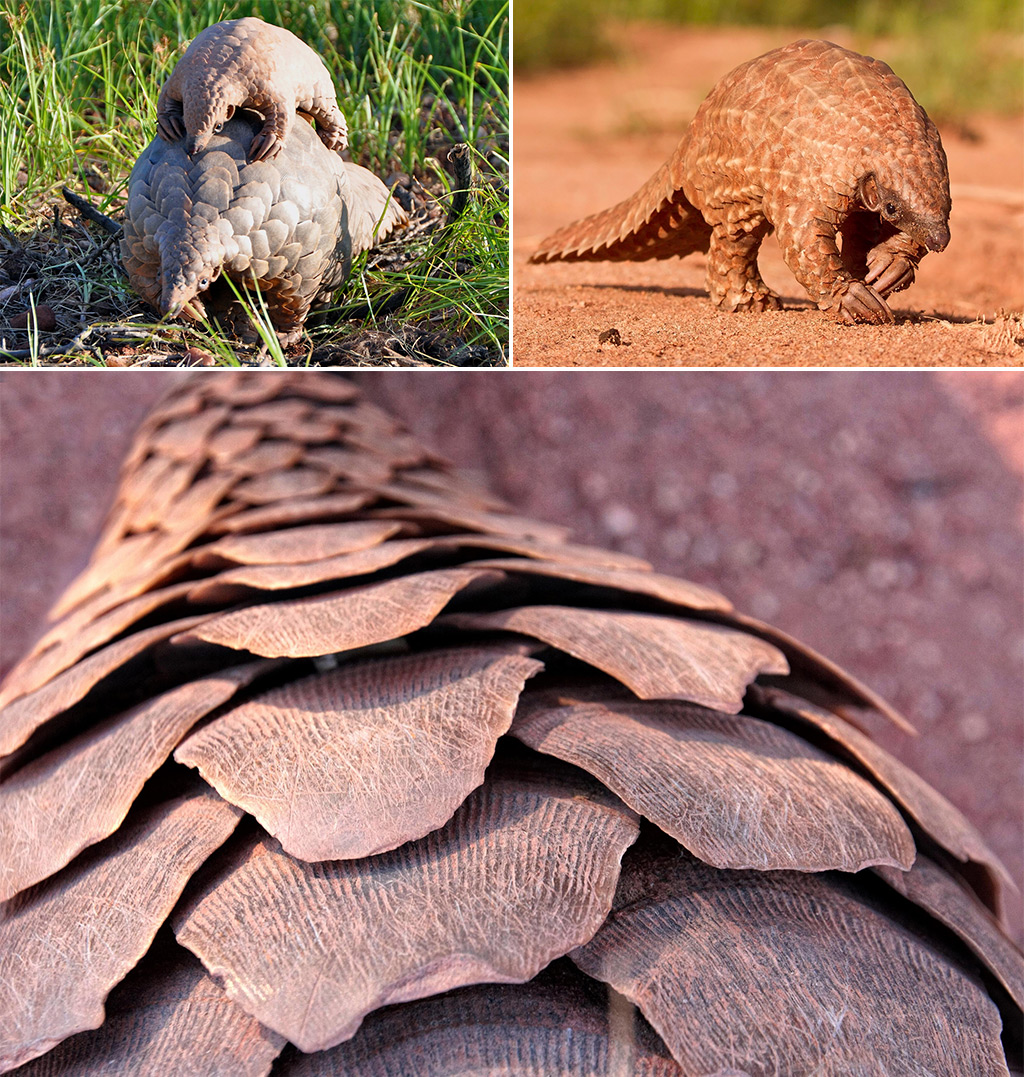
5. Pangolin scales are among the most sought-after items in the illegal wildlife trafficking market. In mainly China and Vietnam, their scales are highly prized by consumers who turn to traditional Chinese medicine as a means of recovering from various ailments. The scales are believed to cure various problems, from asthma to arthritis. Scales have no medicinal benefits, considering that the scales are made of keratin – the same material that a human’s fingernails and hair are made from. Rhino horn, the “teeth” of baleen whales, and the claws of bears, lions and other clawed animals are also made from keratin.
6. They defend themselves by rolling into a tight ball to protect their soft bellies. Their sharp-edged scales can easily cut predators, and they emit a putrid fluid from anal glands to ward off predators.
7. Pangolins have no teeth and use their long sticky tongues to eat ants and termites – up to 70 million per year. The tongue can reach up to 41 centimetres when extended! It is attached to the pelvis and the last pair of ribs, and the rest is stored in the chest cavity.
8. They locate their meals using their acute sense of smell and dig for ants using their strong claws. They eat small pebbles to aid with digestion. Pangolins can constrict their ears and nostrils while feeding – to keep insects out.
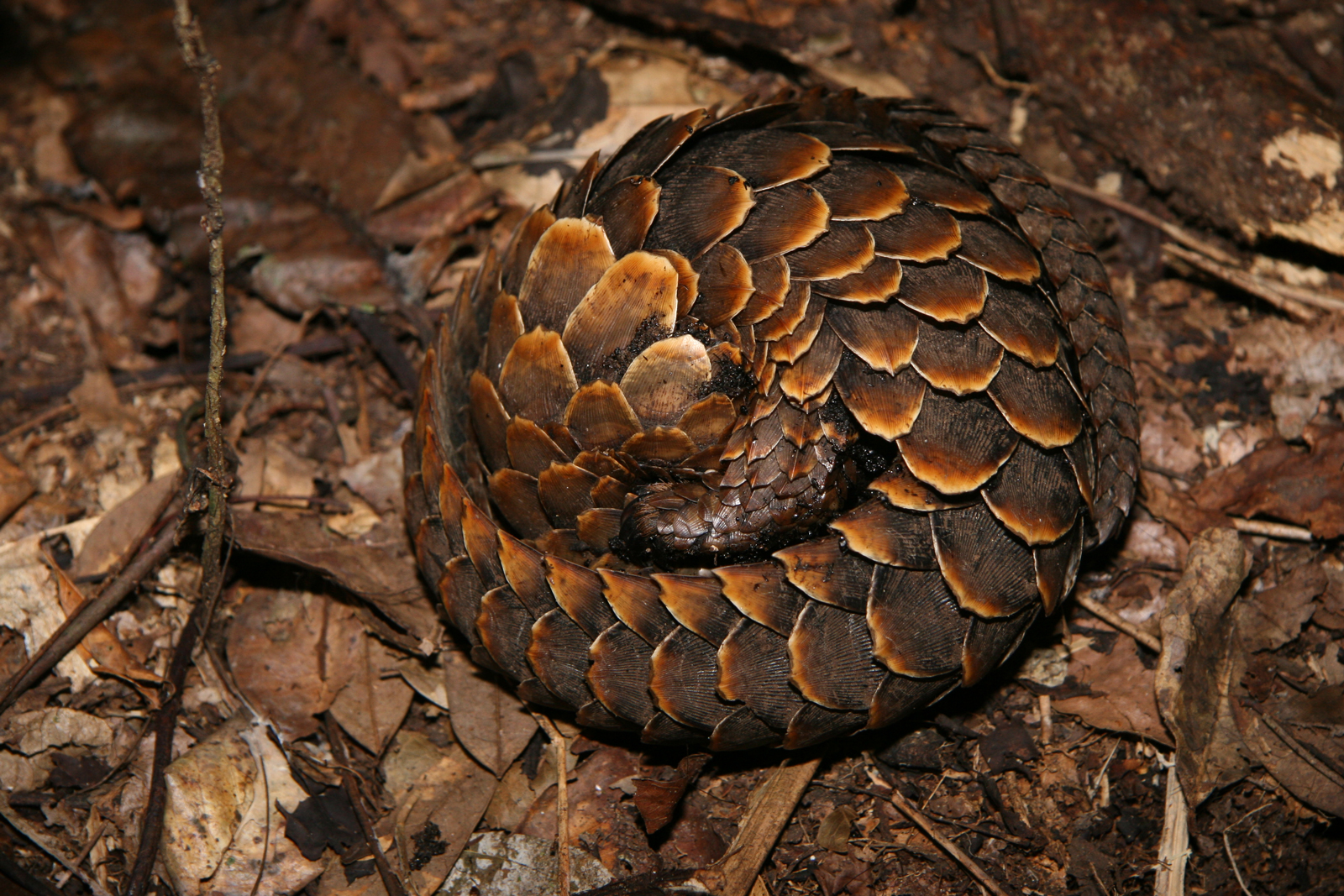
9. They have poor vision and hearing but an excellent sense of smell.
10. Pangolins have long curved claws on their front feet, which they use to turn over rocks, pull bark off trees and logs, and excavate ant nests and termite mounds. Tree pangolins also have long claws on their back feet, plus a soft pad on the tip of the tail to assist with climbing trees.
11. They are solitary and predominantly nocturnal, although they become active earlier during cold weather. Young animals are also prone to be more active during the day.
12. Pangolins do not dig their burrows but use abandoned aardvark, porcupine and warthog burrows. They may also shelter in termite holes, caves, in-between rocks, shrubs or piles of debris.
13. Pangolins are bipedal, walking on their hind legs with the front limbs and tail held off the ground and used for counter-balance.
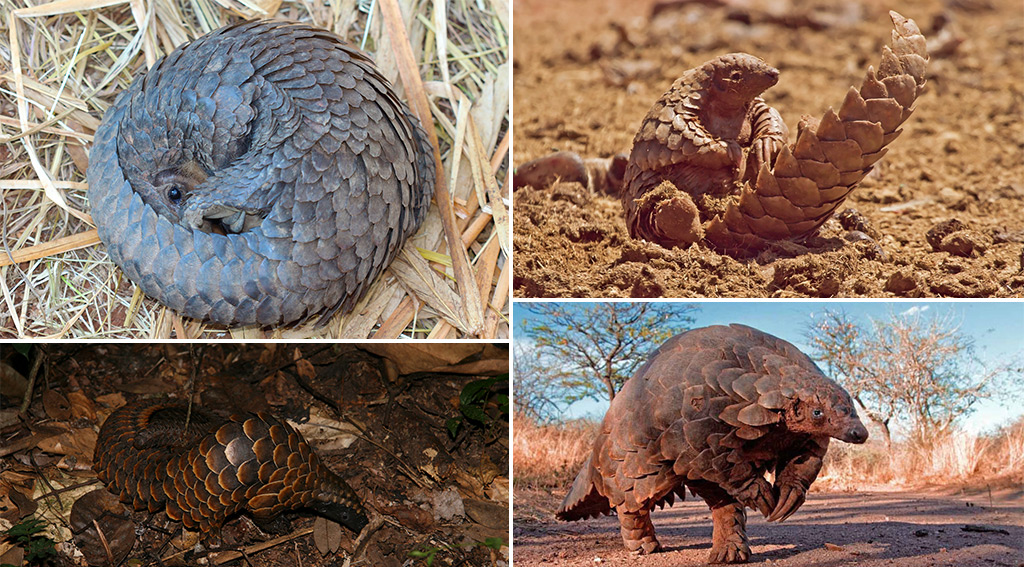
Pangolin species
The four species found in Asia are the Indian pangolin (Manis crassicaudata); Philippine pangolin (Manis culionensis); Sunda pangolin (Manis javanica); and the Chinese pangolin (Manis pentadactyla). The Sunda and Chinese pangolins are ‘Critically Endangered’ – the most threatened of all pangolin species.
The four species found in Africa are the black-bellied pangolin (Phataginus tetradactyla); white-bellied pangolin (Phataginus tricuspis); giant ground pangolin (Smutsia gigantea); and Temminck’s ground pangolin (Smutsia temminckii).
Here we take a closer look at the four African species:
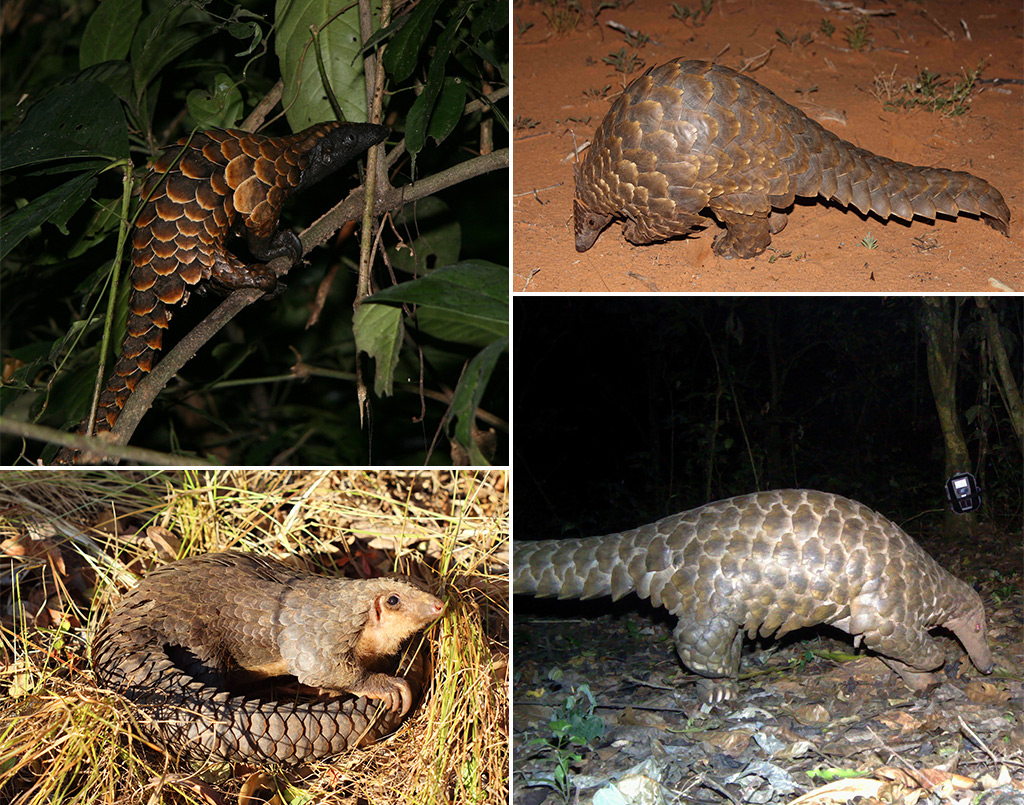
Smutsia temminckii – ground pangolin (also known as Temminck’s ground pangolin or Cape pangolin)
This terrestrial species is the only species that is found in southern Africa. Its range extends from southern Africa through most of East Africa to Sudan and southern Chad. It inhabits dry savannah and desert environments. Adults grow up to 1.2 metres in length and weigh 19 kg, but average 10-15 kg. This species often use the burrows of other animals, such as aardvarks and aardwolves.
• IUCN Red List: Vulnerable
Smutsia gigantic – giant ground pangolin (also known as the giant pangolin)
This is the least common of the two terrestrial species and occurs in forests and forest-savannah mosaics in Central and West Africa. It is the largest species, with adults growing up to 1.5 metres in length and weighing up to 35 kg.
• IUCN Red List: Endangered
Phataginus tricuspis – white-bellied pangolin (also known as the tree pangolin)
This is a small, arboreal species. It is the most widespread of the two tree species, occurring widely in West and Central Africa, where it inhabits forests, dense woodlands and even secondary forests and agricultural lands (especially oil palm plantations). Adults are small, reaching a maximum length of 1 metre and weighing 1.5-3 kg, but typically only 1-2 kg. Certain physical characteristics separate the arboreal pangolins from ground pangolins: They are smaller, have very small first forelimb claws, their eyes are larger, their scales have an irregular arrangement, and they have tails pads which are used for climbing. While both of the tree-dwelling species have long tails, the white-bellied pangolins are notably shorter.
• IUCN Red List: Vulnerable
Phataginus tetradactyl – black-bellied pangolin (also known as the long-tailed pangolin)
This species is also arboreal and is the rarest of the two tree species. It occurs in forests in Central and West Africa and is mostly restricted to swamp forests and riparian vegetation. It is also said to be the most aquatic of the four African species, regularly taking to water to escape predators or to cross rivers. Adults are also small, attaining a maximum length of 1.1 metres and weighing 2-3.5 kg.
• IUCN Red List: Endangered

To comment on this story: Login (or sign up) to our app here - it's a troll-free safe place 🙂.![]()






